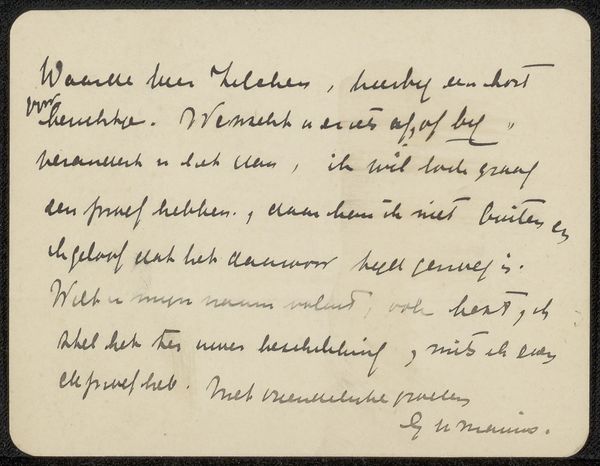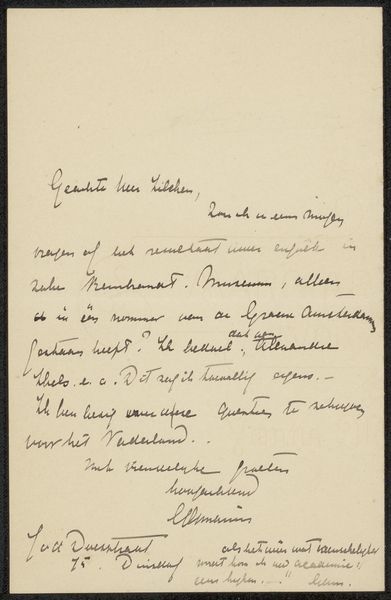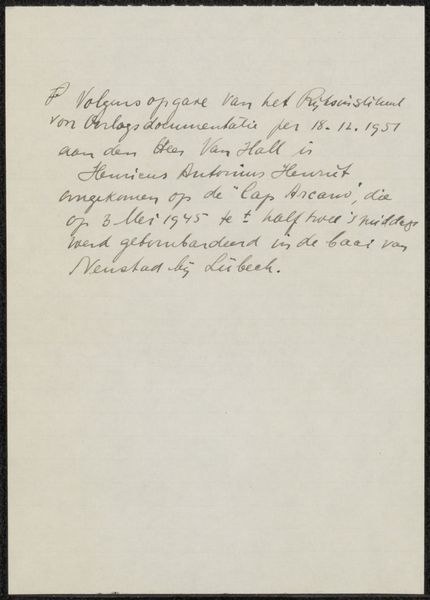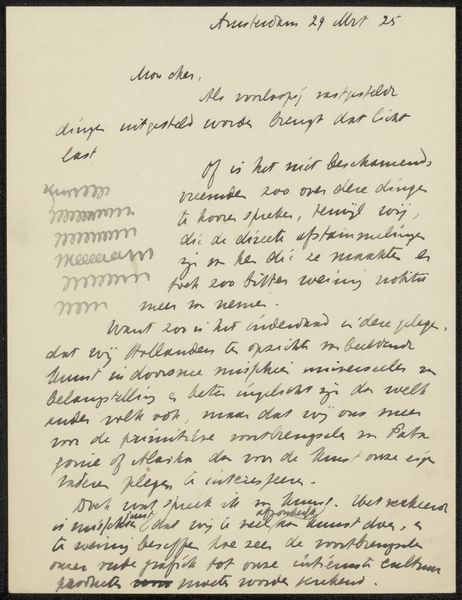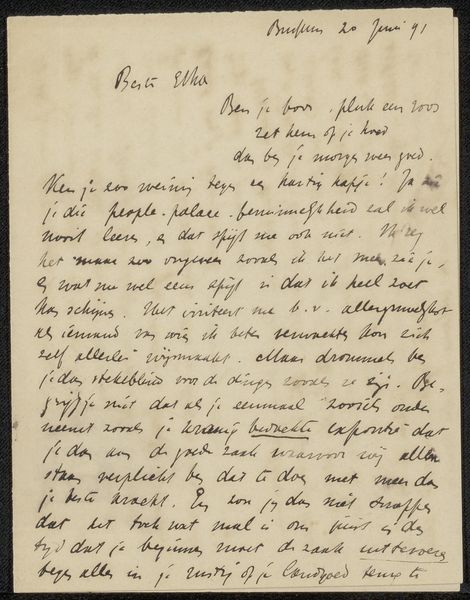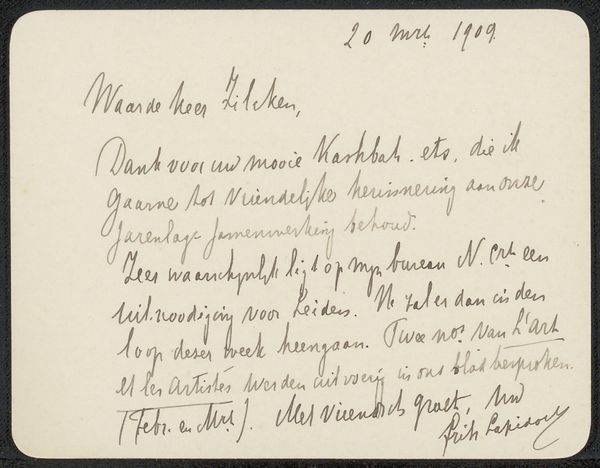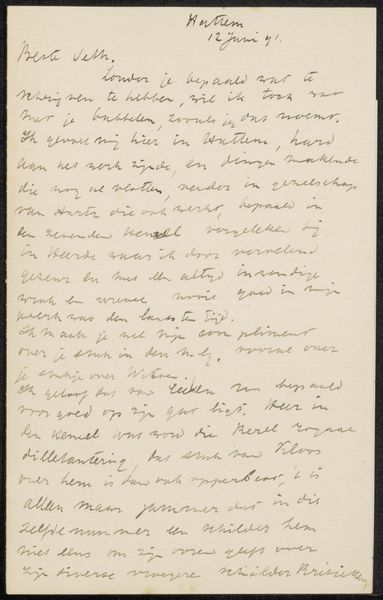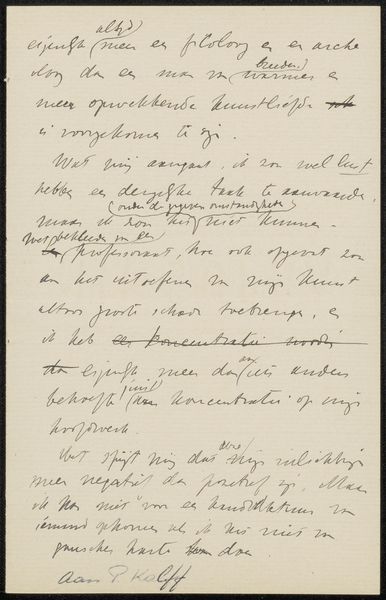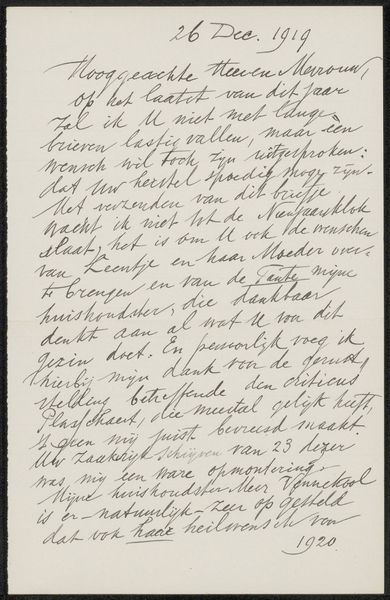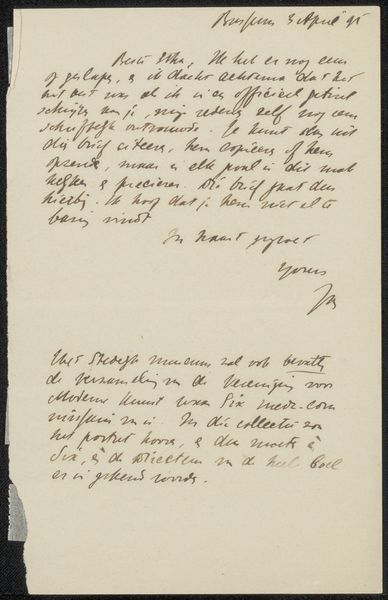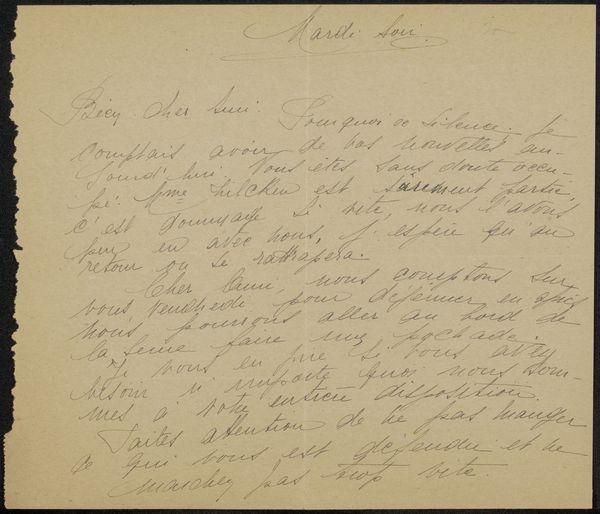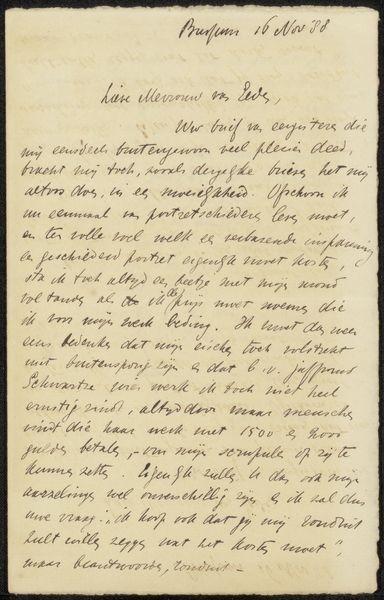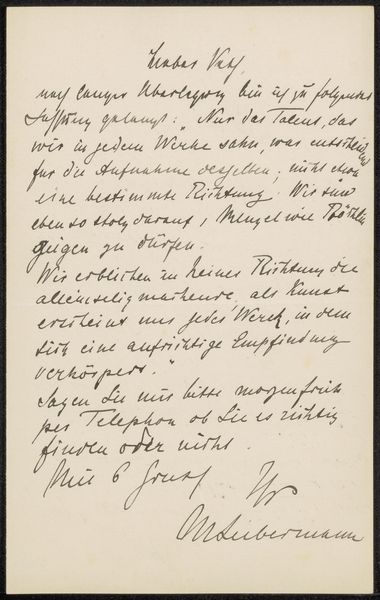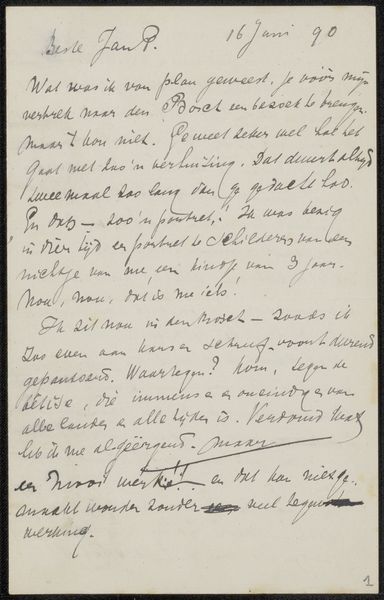
drawing, paper, ink, pen
#
drawing
#
hand-lettering
#
hand drawn type
#
hand lettering
#
paper
#
personal sketchbook
#
ink
#
pen-ink sketch
#
sketchbook drawing
#
pen
#
modernism
Copyright: Rijks Museum: Open Domain
Curator: This is a pen and ink drawing on paper by Grada Hermina Marius, titled "Brief aan Philip Zilcken," made sometime before 1913. Editor: It’s simply a letter—the artist's handwritten words dance across the page. It feels incredibly intimate. Curator: Indeed, the drawing consists entirely of hand-lettering. There are no illustrative elements to speak of beyond the shapes formed by the script itself. Marius transforms a simple correspondence into a visual experience. Editor: I’m fascinated by the controlled chaos of it. The letter leans toward calligraphic experimentation, each line vibrating with expressive intention, though it has its practical intent to convey something in the space between the letters and their sequence in a line. Curator: Precisely, one can read Marius deploying modern sensibilities towards line and form that point towards a Modernist aesthetic, though somewhat restricted by its pragmatic purpose. It walks a fine line between utility and abstraction, challenging conventions, and embracing unique textual presentations. Editor: I like how the act of writing becomes almost performative. The weight of the pen stroke seems crucial, and you sense the artist grappling with each word, not just for meaning, but for its visual impact as part of the whole. Curator: Considering it's a "personal sketchbook" piece makes me think about her thought processes while planning and drafting major projects, and that in turn opens questions regarding other possible interpretations about Marius, considering her identity as an influential female art critic during that era. Editor: This letter transcends its immediate context. I like the impression it leaves us. It has something intensely human to convey from one end to another. Curator: This glimpse into the artist's personal correspondence encourages viewers to find beauty within the ordinary. It also reminds us to contemplate what isn’t communicated by the work and its elements, allowing our speculations to contribute to understanding.
Comments
No comments
Be the first to comment and join the conversation on the ultimate creative platform.
